Brian Lloyd Duckett is a professional street photographer who runs workshops across the UK and Europe. He shoots exclusively on Fujifilm; the X100F, X-Pro2 and X-E3 being his weapons of choice. Some of your best street photography can be done during the hours of darkness and night shooting is something we should all try; it’s almost a rite of passage. Think neon lights, shop windows, reflections, car lights, bars, restaurants, people having fun, street lighting . . . there’s masses of material to explore.
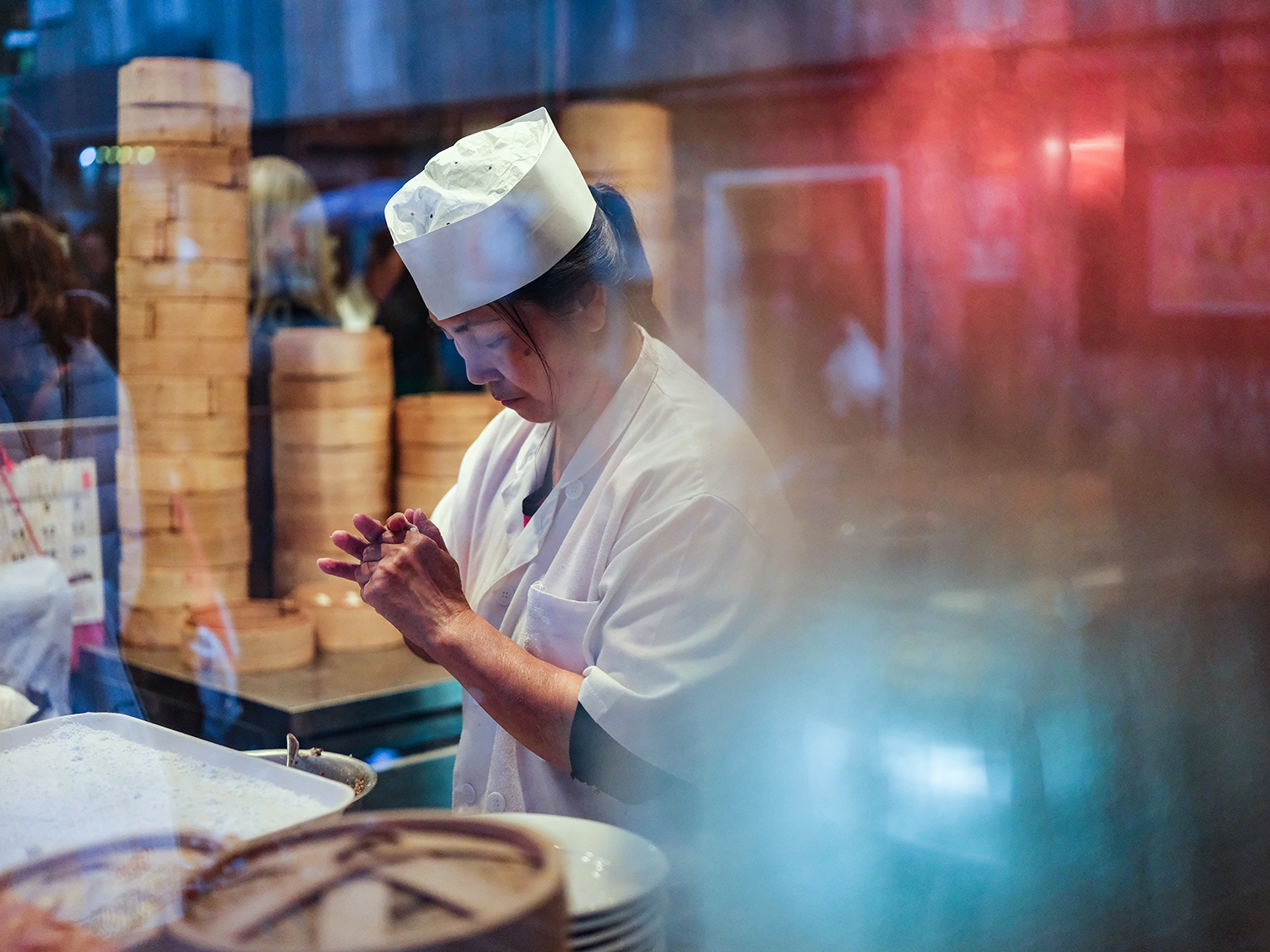
I try to get out there regularly, particularly between late October and late March when there’s a bigger window of opportunity with more hours of darkness in the day. You can shoot in any town or city where there are strong light sources. Somewhere like London’s Soho and Chinatown are ideal, with lots of coloured and neon lights. You can even get great shots just by relying on ambient lighting from the regular street lamps.
There’s no reason that shooting in the dark should be any more difficult than daylight shooting – but, as well as the aesthetic issues, there are some different technical and practical considerations to take into account. Here are my top tips for shooting street photography at night…
1. Chase the light
Just like all street photography, shooting a night is all about finding good light. I often find it helpful to find my light source first, then build a composition around that. Try to stop and think about the intensity, direction and colour of the light source and how it falls on potential subjects. Watch how the light changes as you move around it; observe reflections and see the impact of changing light patterns such as car lights. I’m always drawn to strong reds, oranges and yellows, of which there are plenty in areas such as Chinatown.

2. High ISO is your friend
Don’t think twice about whacking up your ISO. I’m usually shooting at 3,200 by default – a rating which most modern cameras can handle with ease (it’s a breeze for cameras like my FUJIFILM X100F or X-Pro2). I’ll go to 6,400 and beyond if I need to. Some people struggle to get their head around this, believing that noise will be an issue. Well, it isn’t – it can sometimes even add to the atmosphere – and the alternative (a blurred or massively underexposed image) is simply not an option.
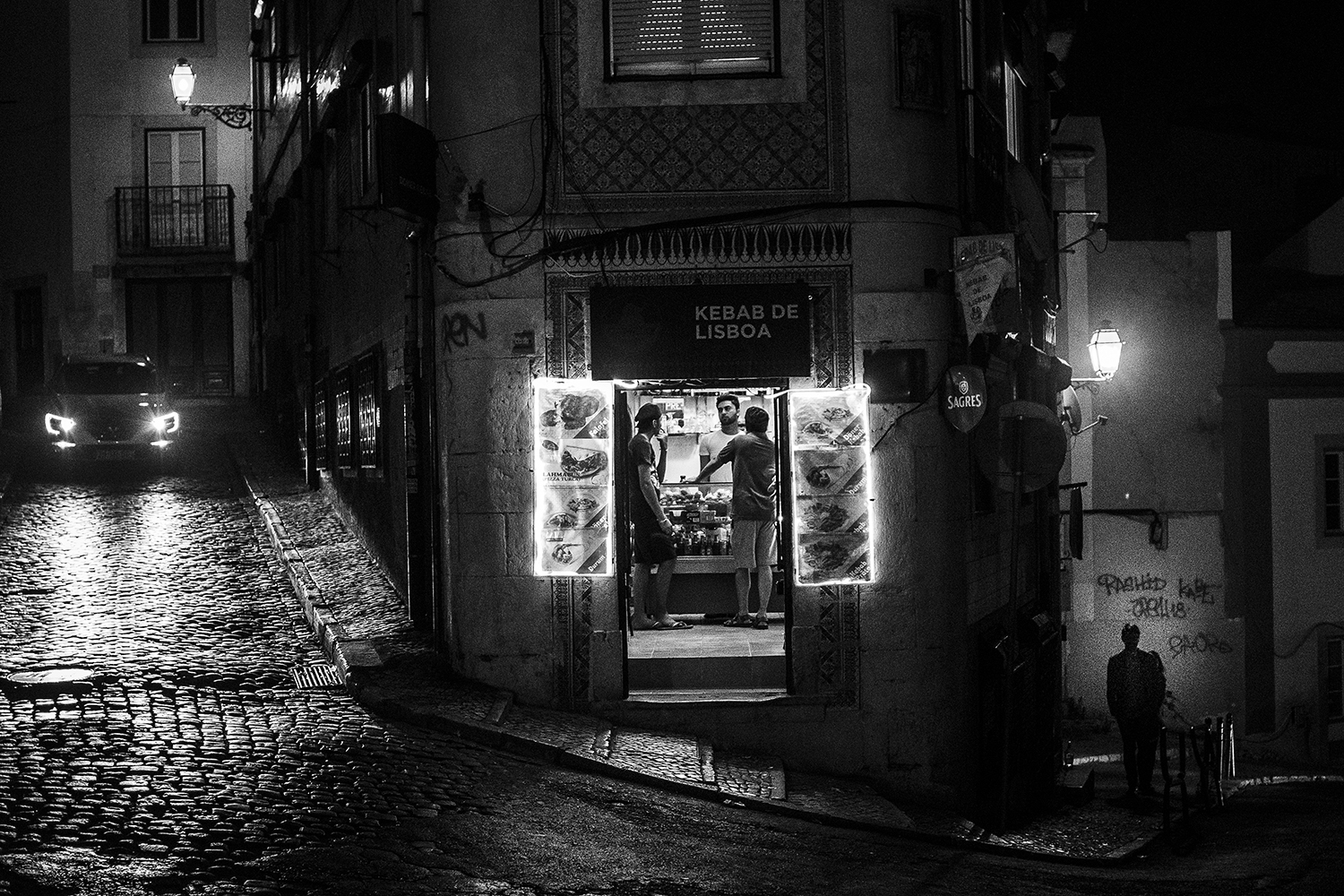
3. Slow down
To really absorb and become part of night-time street life you should slow right down, stopping frequently to take in your surroundings, watching the light and waiting for that ‘moment’. You’ll probably be using a slower than ideal shutter speed, so stopping to take a picture is more important than ever.
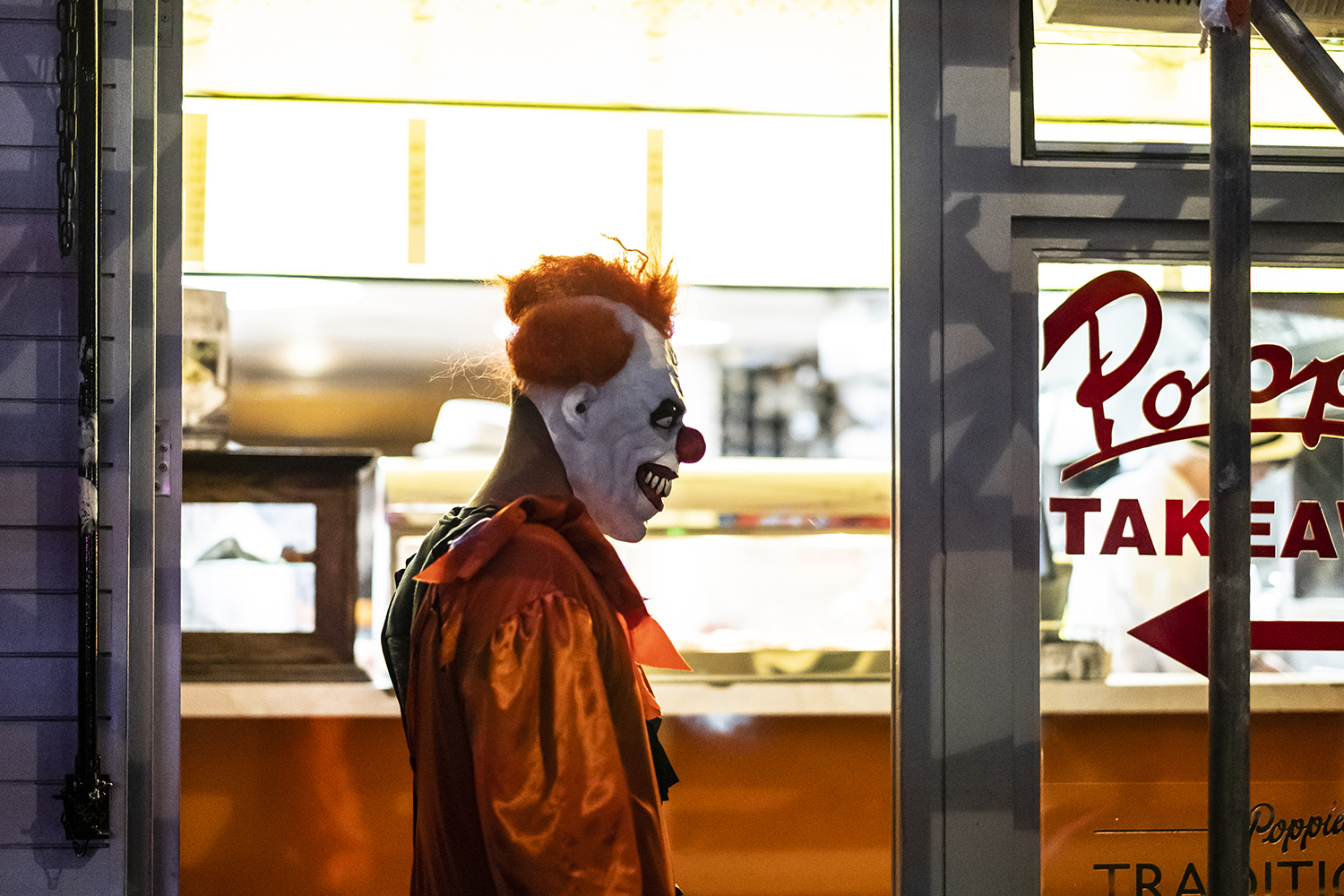
4. Experiment with different lenses
I prefer prime lenses (for their lightness, image quality and wide apertures). In my bag, for night shooting, is a variety of primes, usually including an XF18mmF2 (28mm full-frame equivalent), an XF23mmF1.4 (35mm equivalent) and an XF56mmF2 (85mm equivalent). This gives me an ideal range and also the option of shooting with very wide apertures for some great bokeh effects. If all you have is a zoom, fine – I’ve used the XF18-55mmF2.8-4 and the wonderful XF16-55mmF2.8 for night shooting and both produce sharp, high contrast images.
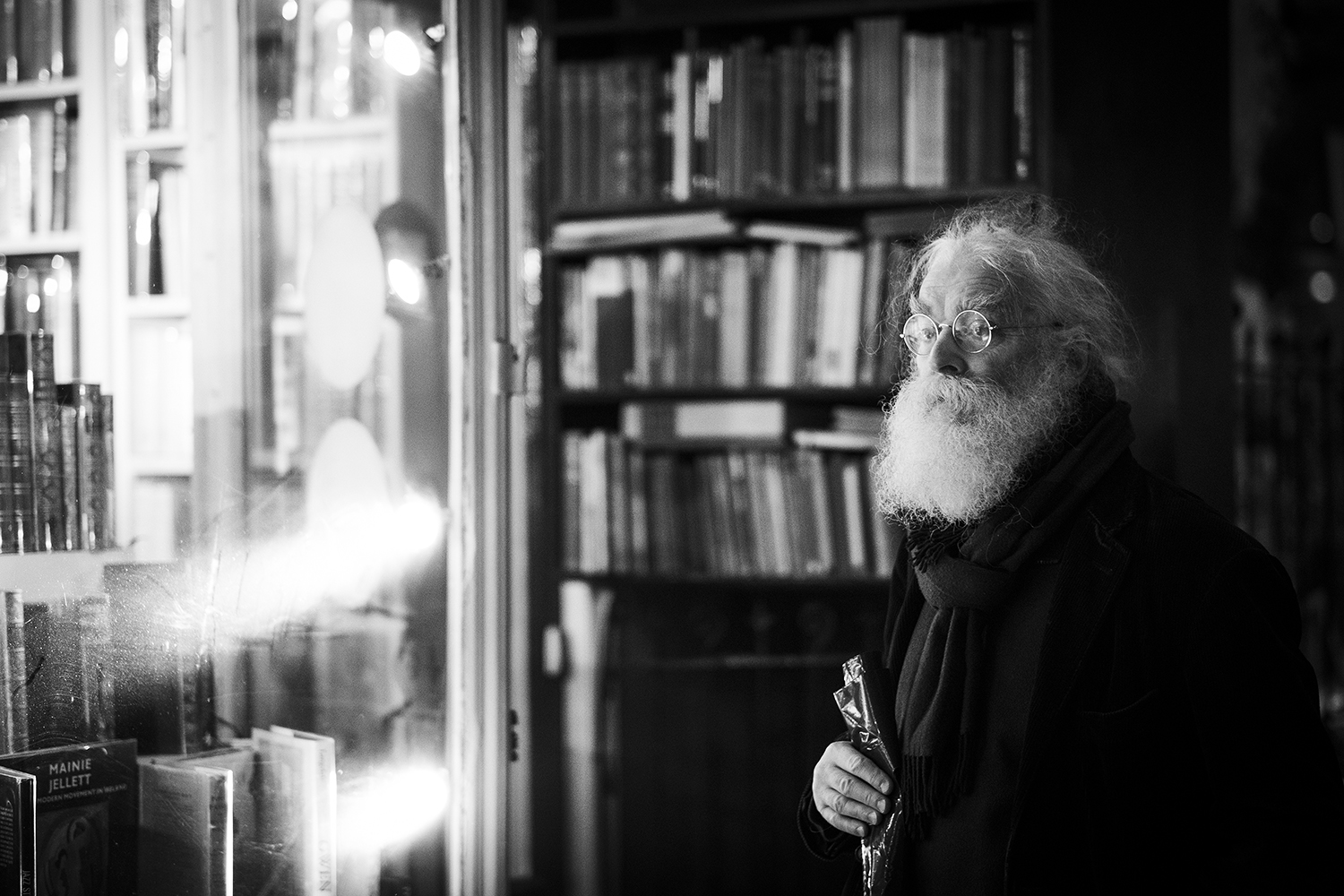
5. Leave your flash and tripod at home
A tripod will slow you down and strip any spontaneity out of your shooting. It might be fine for a perfectly exposed cityscape with fabulous light trails but for street photography, forget it. And try to avoid using flash, which will draw (sometimes unwelcome) attention to yourself and could compromise some of the ‘documentary’ feel you may be trying to achieve.
6. You want dark images
A controversial statement, maybe, but one I believe in. Modern cameras will often strive to produce what their processor believes to be a perfectly exposed image; at night, this can mean an over-exposed image – and usually an unrealistic one. If you wanted your pictures to look like they were taken in daylight, you would have shot them in daylight. You need deep shadows and areas which are almost too dark to comprehend. If in doubt, look at your histogram – if it’s significantly to the left, you’re probably in a good place.
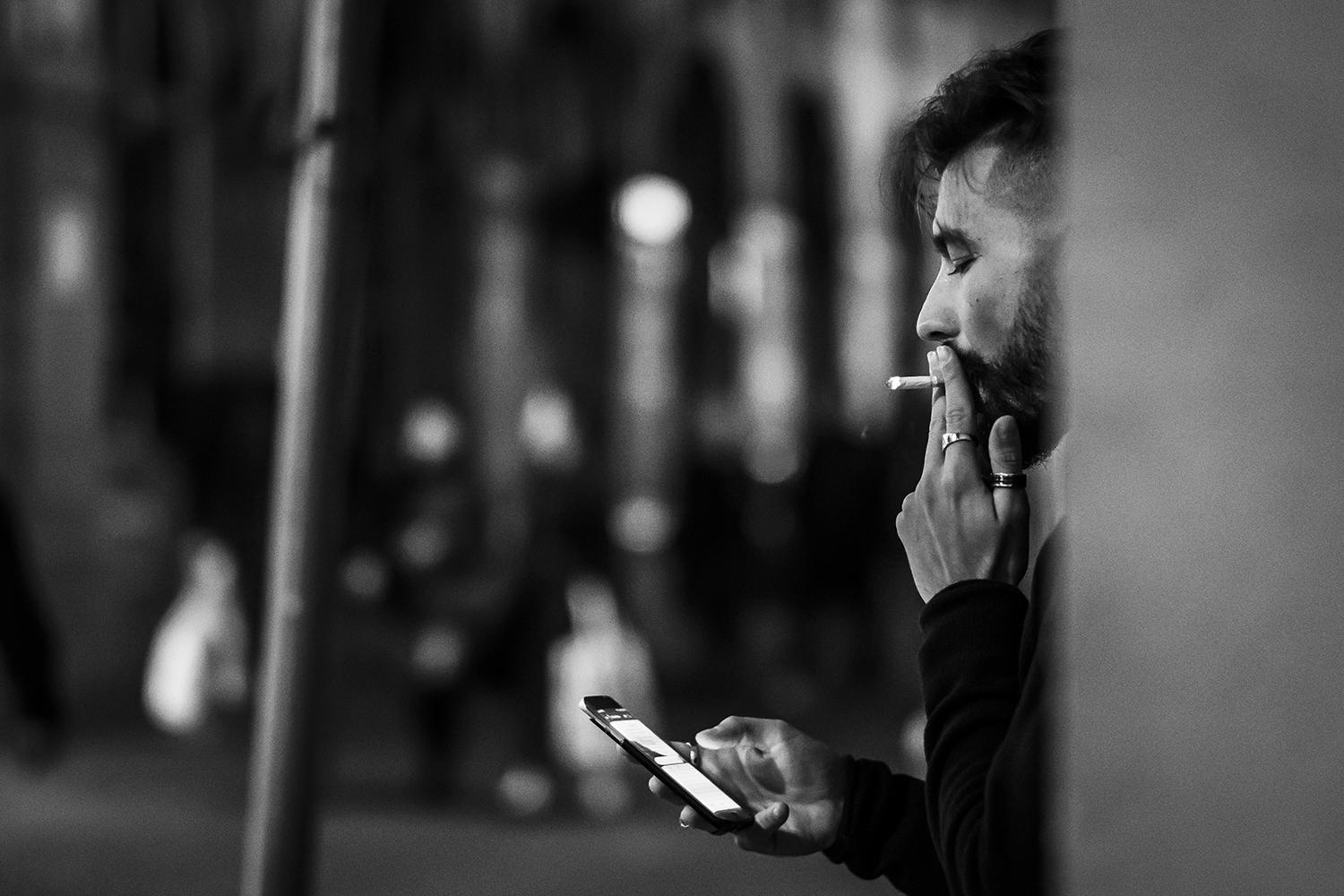
7. Try motion blur
As you’re often forced to use a slow shutter speed, why not make the most of it? Go with it – use it to your advantage! Use a speed of, say, between 1/2 and 1/8 second to get some deliberate blur into moving elements in your frame – cars, people, buses, rickshaws, bicycles, trams etc. With a steady hand (with the camera either hand-held or on something), you should be able to keep the desired area of the image sharp. You could even experiment with a little ICM (intentional camera movement).
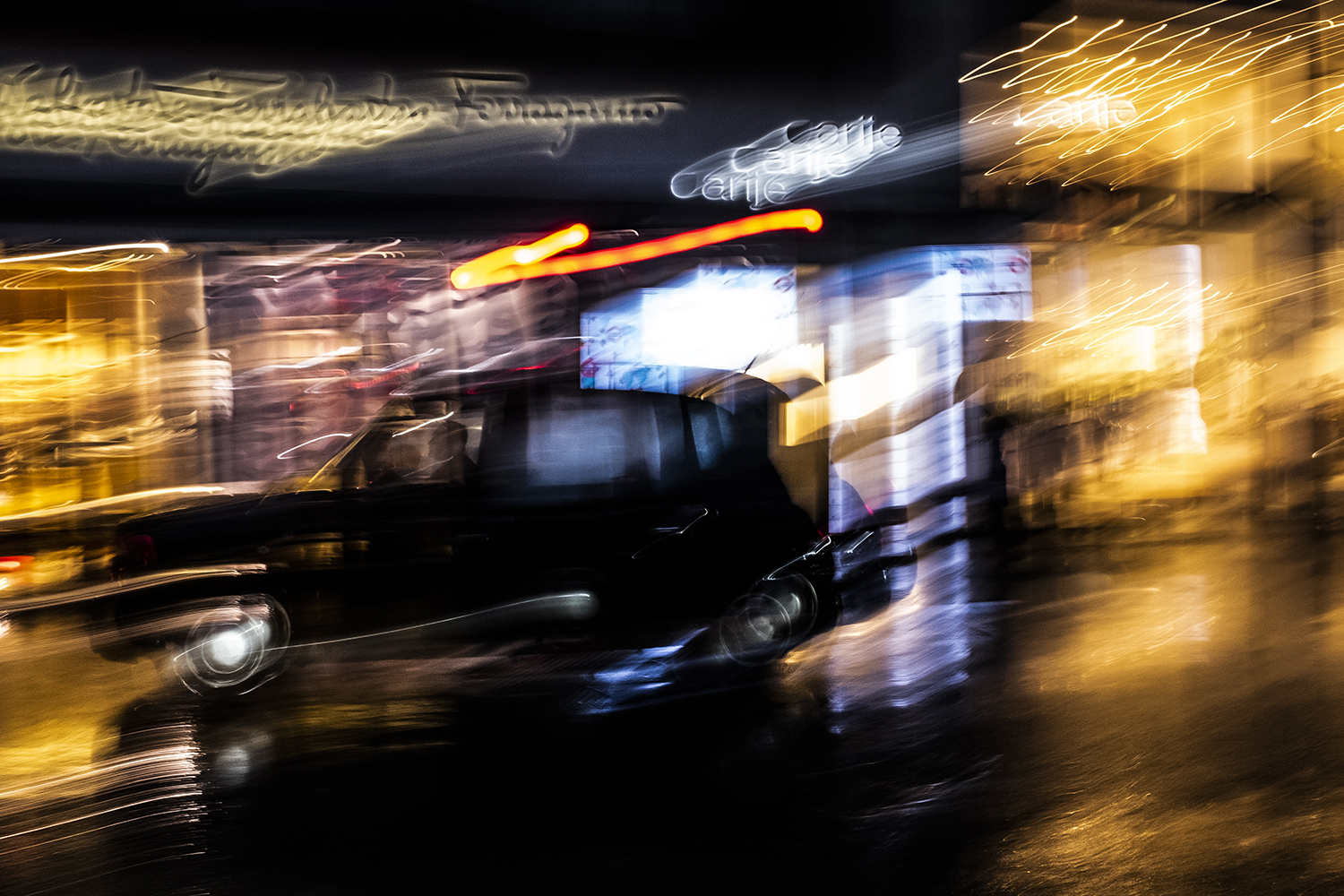
8. Get your settings right
Whilst there is no right or wrong for this, I use a tried and trusted formula which consistently works for me and it goes something like this:
• ISO 3,200 by default but will increase to 6,400+ when necessary
• Aperture priority (‘A’) mode
• Aperture value likely to be at the wider end of the scale – usually between F1.2 to F5.6, depending on the subject
• Exposure compensation (+/-) used occasionally for fine-tuning exposure
• Manual focusing (AF can be too slow). You’ll find that with practice this will become quick and easy, especially when using red focus peaking
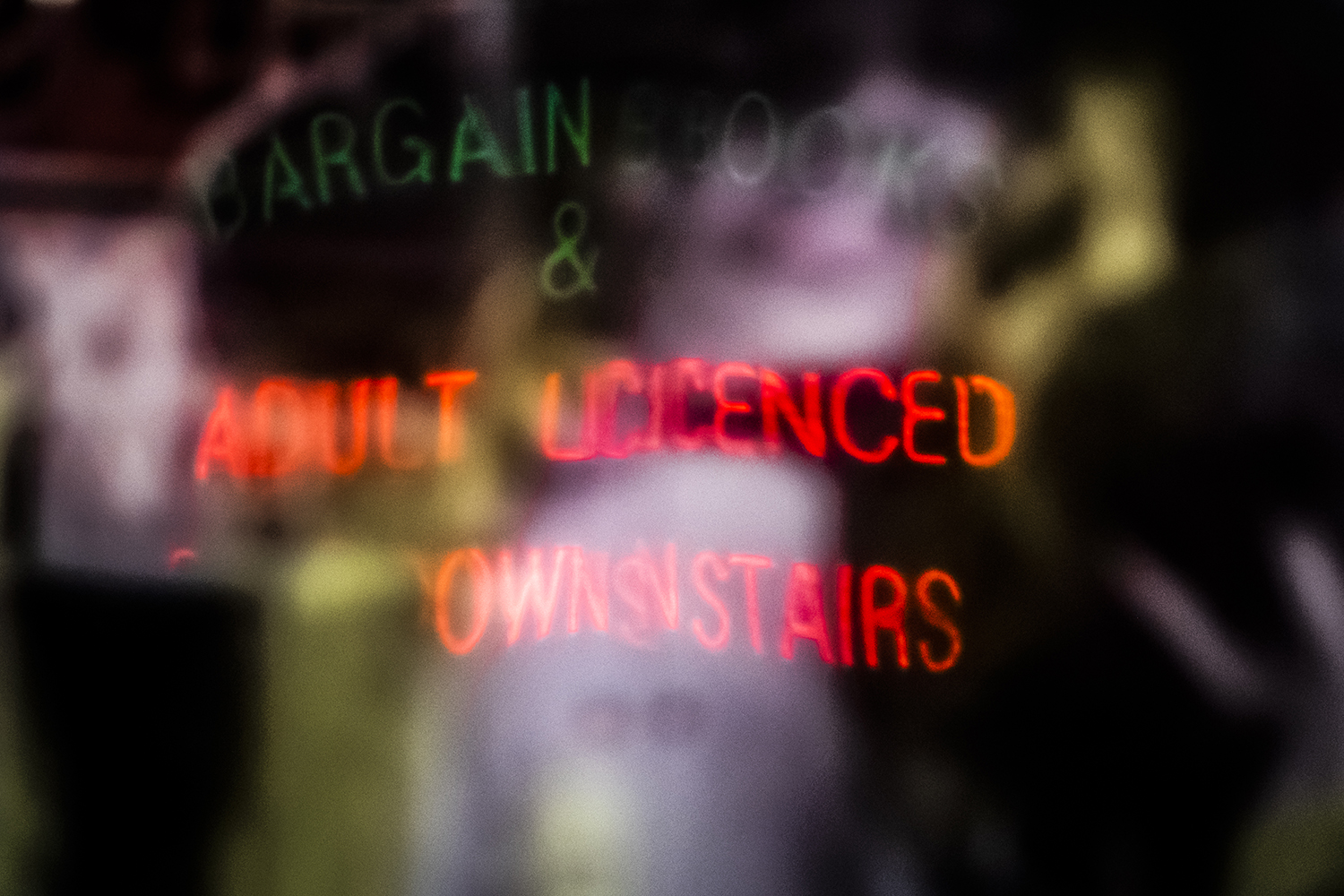
9. Shoot close-up and from a distance
Remembering Robert Capa’s advice, “If your pictures aren’t good enough, you’re not close enough”. I enjoy shooting at close quarters at night, whether the image is based on an abstract, a narrative or a ‘moment’. Shooting close-up can produce striking images but don’t be a one-trick pony – also consider shooting wider street scenes, where you can often construct a fascinating tableau of night life.
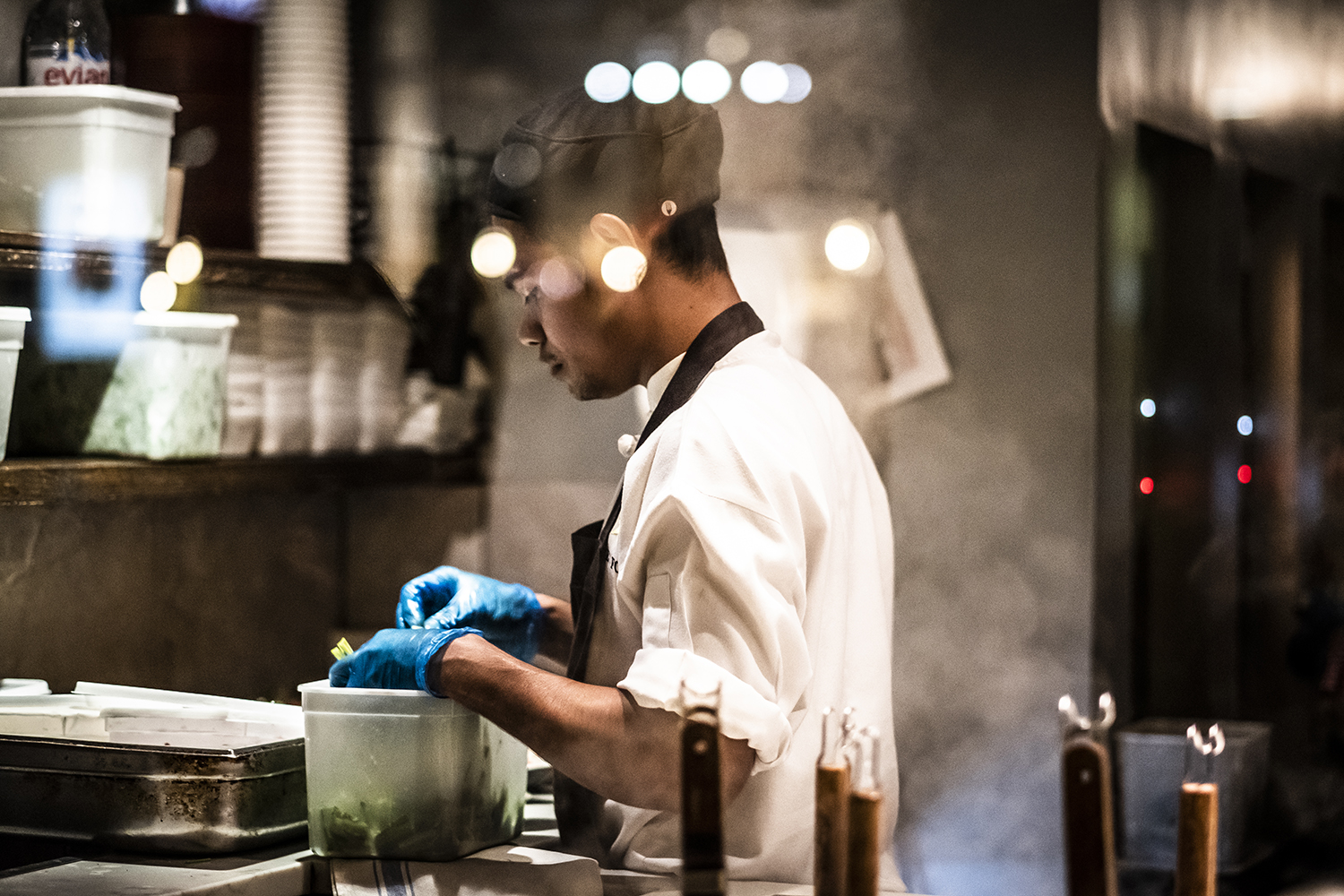
10. Stay safe
Take more care at night than you would during the day. You’ll be a little more vulnerable and exposed so be aware of who is around you and always have an ‘escape route’ in mind. Don’t go down dark, quiet alleys alone and try to stick to busier areas. Shooting with a buddy or in a small group is often the best option.















































